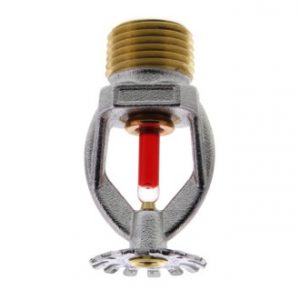 Many commercial property policies and business-owners policies (BOP) contain a version of the Protective Safeguards Endorsements when the policy holder is receiving a credit for having an alarm system, sprinkler system, security service, or in a restaurant a hood and duct extinguishing system. The ISO (Insurance Services Office) form number is CP 04 11 10 12.
Many commercial property policies and business-owners policies (BOP) contain a version of the Protective Safeguards Endorsements when the policy holder is receiving a credit for having an alarm system, sprinkler system, security service, or in a restaurant a hood and duct extinguishing system. The ISO (Insurance Services Office) form number is CP 04 11 10 12.
The endorsement is usually buried in along with the property forms for the policy is often overlooked. But there’s something important to know about this endorsement and its potential impact on a claim settlement. Section B says that “We will not pay for loss or damage caused by or resulting from fire if, prior to the fire, you:
- Knew of any suspension or impairment in any protective safeguard listed in the schedule above and failed to notify us of that fact; or
- Failed to maintain any protective safeguard listed in the Schedule above, or over which you had control, in complete working order.
It does go on to say that if a system breaks and it can be fully restored within 48 hours you (the insured) will not need to notify the insurer. (Paraphrased)
I think it’s somewhat reasonable that if you knew of the suspension and failed to notify the insurer then there should be a participation in paying the loss – but the endorsement says NO COVERAGE. That’s pretty serious. In conversations with prospective insureds (especially restaurant owners) when I bring this up they say they didn’t know it existed! That’s scary.
Now the second part of the exclusionary language of “failed to maintain” can seem ambiguous – what constitutes failure to maintain? Well, for automatic fire sprinkler systems maintenance is likely determined by the NFPA (National Fire Protection Association), or specific state or municipal standards which typically mirror NFPA standards, and those are pretty rigorous and include monthly visual inspections of valves, gauges, piping. Quarterly inspections extend to alarm devices on the system, fire department connections, etc. But then there’s the quarterly testing of water flow alarms, main drain tests, alarm devices, etc. specified by NFPA. They also mandate that you document these actions quarterly!
That’s pretty serious stuff, and I’m not aware of too many industrial companies that comply with that sort of testing and maintenance of their systems. (I think it’s a good idea, but in practical real world settings I don’t think it happens too often.)
Do I think an insurer would not pay a claim if you didn’t measure up to that level of maintenance? Probably not, the potential backlash could be harsh. But, if your insurer’s loss control department has made recommendations for testing – especially the main drain test and pressure test – for the past three years and you didn’t comply and there was a fire where the sprinkler system didn’t work; well, that’s another story. You may have a large uncovered claim on your hands in that situation.
The point of this post is to educate and make you aware that this endorsement is probably in your policy if you do have a sprinkler system. If you’ve had a recommendation from your insurer to have your system inspected and tested – DO IT! Yea, it’s an expense you’d rather not pay, but the potential ramifications of having a sprinkler system fail, and then paying a large fire loss out of pocket (or going bankrupt) is a real possibility due to this endorsement.
Risk control and understanding/reading your insurance policies is important; really important. Not getting the level of expertise in this area from your current broker? Give us a call and let’s chat and see if we might be a good fit for your company.

